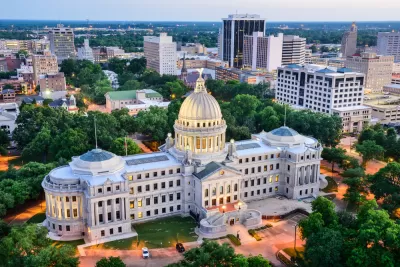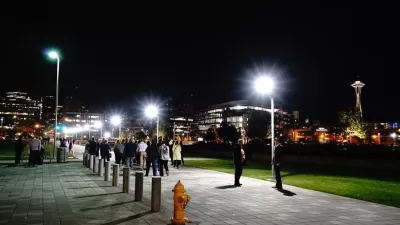Not all urban dwellers are as liberal as conventional wisdom would have us believe.

Rachael Dottle presents maps and data on the political segregation of U.S. cities, working to debunk one narrative about the political realities of big cities. That is, just because Democrats tend to win most of the votes in big cities, doesn't mean that there aren't any Republicans living in urban settings.
"Much has been made of the country’s urban-rural political divide, but almost every Democratic city has Republican enclaves, especially when you think about cities as more than just their downtowns," writes Dottle.
"It’s a sign of our polarized times that these Republicans aren’t evenly distributed across the city, of course. But it’s also a sign of how centuries of American history have shaped and continue to shape where we live — and who our neighbors are."
According to map that illustrates U.S. Census Bureau data, metropolitan areas get much more Republican where regions get less dense.
The article also adds a new wrinkle to this map-based analysis by creating a dissimilarity index: "basically, a number that tells us how separated its Republicans and Democrats are from one another, with higher numbers indicating more segregation."
According to that index, the most politically segregated cities in the country are mostly found in the South. Jackson, Mississippi and then New Orleans lead the list. The first appearance of a city outside of the South is New York City at number ten.
FULL STORY: How Politically Segregated Is Your City?

Maui's Vacation Rental Debate Turns Ugly
Verbal attacks, misinformation campaigns and fistfights plague a high-stakes debate to convert thousands of vacation rentals into long-term housing.

Planetizen Federal Action Tracker
A weekly monitor of how Trump’s orders and actions are impacting planners and planning in America.

Chicago’s Ghost Rails
Just beneath the surface of the modern city lie the remnants of its expansive early 20th-century streetcar system.

Bend, Oregon Zoning Reforms Prioritize Small-Scale Housing
The city altered its zoning code to allow multi-family housing and eliminated parking mandates citywide.

Amtrak Cutting Jobs, Funding to High-Speed Rail
The agency plans to cut 10 percent of its workforce and has confirmed it will not fund new high-speed rail projects.

LA Denies Basic Services to Unhoused Residents
The city has repeatedly failed to respond to requests for trash pickup at encampment sites, and eliminated a program that provided mobile showers and toilets.
Urban Design for Planners 1: Software Tools
This six-course series explores essential urban design concepts using open source software and equips planners with the tools they need to participate fully in the urban design process.
Planning for Universal Design
Learn the tools for implementing Universal Design in planning regulations.
planning NEXT
Appalachian Highlands Housing Partners
Mpact (founded as Rail~Volution)
City of Camden Redevelopment Agency
City of Astoria
City of Portland
City of Laramie




























